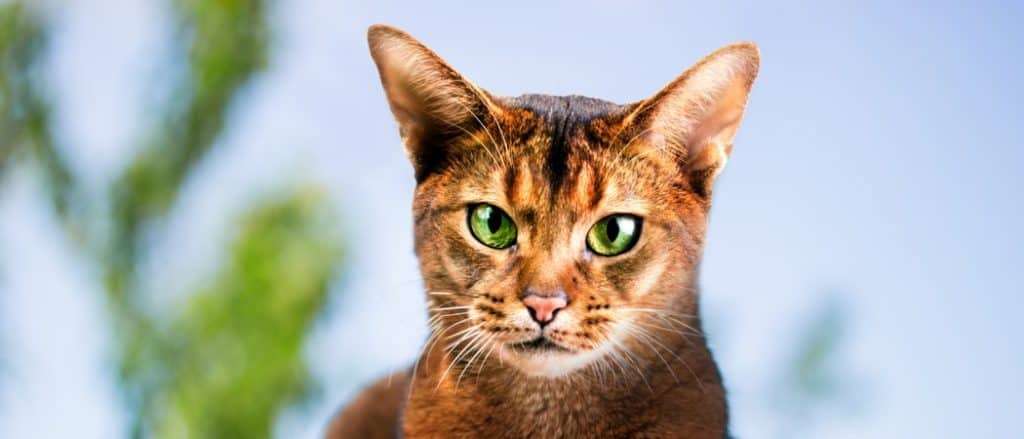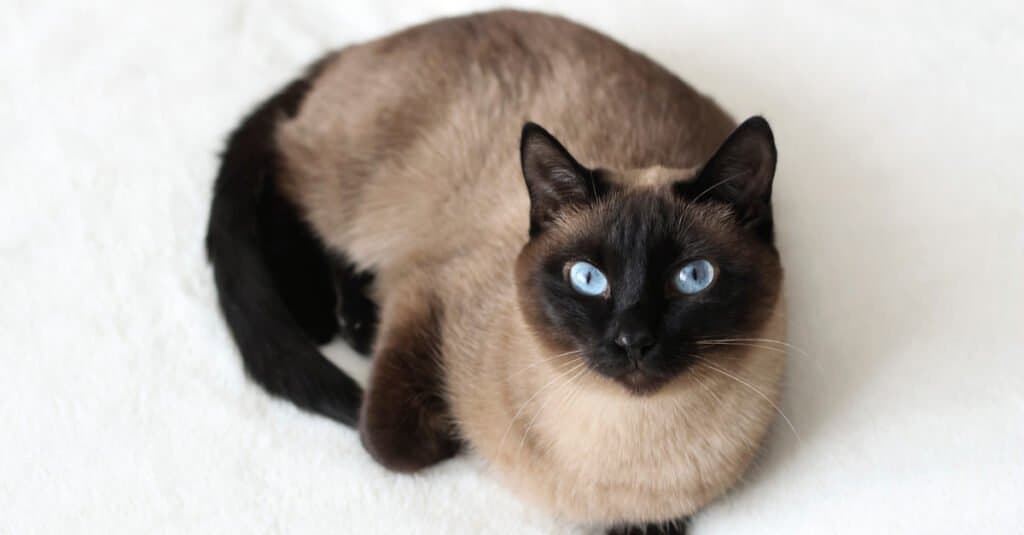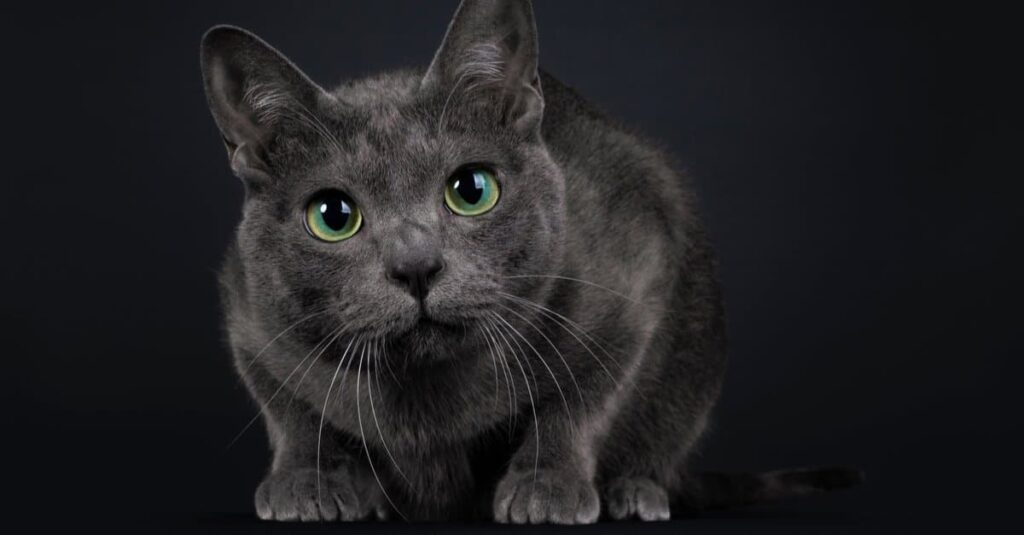Domesticated cats (Felis catus) are some of the most popular pets on the planet. While researchers previously believed that the ancient Egyptians domesticated the first cats, studies show cats started hanging around humans for food scraps and rodents around 10,000 years ago. So, what are the top 10 oldest cat breeds ever?

Top 10 Oldest Cat Breeds Ever
While varying cat breeds feature coat differentiations, their size and stature are relatively the same across most types. This is because cats weren’t bred in the same way dogs were, with attention to detailed selections. Because cats are not predisposed to helping people, breeders were not intent on cultivating useful behavioral traits.
These are 10 of the oldest cat breeds ever:
- Near Eastern Wildcat
- Egyptian Mau
- Abyssinian
- Japanese Bobtail
- Norwegian Forest Cat
- Siamese
- Korat
- Turkish Angora
- Chartreux Cat
- Siberian Forest Cat
1. Near Eastern Wildcat (Felis silvestris lybica)

This wild cat gave rise to most domesticated cats.
©iStock.com/pum_eva
The near eastern wildcat is worth mentioning first since it gave rise to most domesticated cats.
Cats were first domesticated about 10,000 years ago somewhere in the Fertile Crescent. Later, additional breeds developed from other wild cat types. Today, these wild cats are bred with domesticated varieties, which originated from the first domesticated Near Eastern wildcat.
2. Egyptian Mau

Various art from ancient Egypt depicts cats that look a lot like today’s
Egyptian Mau
.
©Steve Photography/Shutterstock.com
Egyptian Maus are probably around 3,000 years old. Researchers believe that some of the spotted cats found in the tombs of pharaohs were Egyptian Maus. Various art from ancient Egypt also depicts cats that look a lot like today’s Egyptian Mau.
A lot of cat connoisseurs believe that the Egyptian Mau is a progenitor to most domesticated cats in existence today. They gave rise to Ocicats, which look like wild cats but are one hundred percent domesticated.
These cats are tremendously agile and easily leap up to 6 feet in the air. They tend to be aloof, alert, and calm. The official colors of this cat are blue, silver, caramel, smoke, and bronze.
3. Abyssinian

Abyssinians are well-known for their cinnamon or orangish coats and beautiful green eyes.
©Kyselova Inna/Shutterstock.com
Abyssinians are a breed that most likely originated in Ancient Egypt, as they look similar to cats depicted in art and hieroglyphics from that era. However, they weren’t officially recorded until the 1800s.
Abyssinians are well-known for their cinnamon or orangish coats and beautiful green eyes. The four recognized colors of these cats are ruddy, cinnamon, fawn, and blue. The first three colors are warm tones from copper to tan and the last is a bluish gray.
4. Japanese Bobtail

In China, Japanese bobtails were famous for their role in controlling rats at silkworm farms.
©iStock.com/fuiyau yap
Sometime in the 500s C.E., artists illustrated Japanese bobtails on wood cuttings and other art. They were the bestowers of good luck at the time. These cats are small in size and almost always weigh less than 10 pounds.
In China, these cats were famous for their role in controlling rats at silkworm farms. The Chinese respected them so much that commoners were not allowed to own them. In their home country, the Japanese liked these cats for their role in hunting food-stealing mice.
5. Norwegian Forest Cat

The Vikings received these longhaired cats from the Crusaders that made it to Norway.
©iStock.com/t:undefined undefined
Vikings most likely brought Norwegian forest cats to Britain around a thousand years ago. Vikings kept cats on their boats to help control rodent populations.
The Vikings received these longhaired cats from the Crusaders that made it to Norway. Interestingly, Norwegian forest cats that bred with an unknown but extinct domestic feline gave rise to Maine Coons in America.
6. Siamese

Their crystal blue eyes and dark points are distinguishing features of Siamese cats.
©Linalyan/Shutterstock.com
Siamese cats were first mentioned in the fifteenth-century Cat-Book Poems from Thailand. At that time, the region was called Siam, which is where their name originates. The cats mentioned in this collection of poems are described as pointed with masks.
Today, true Siamese cats are famous for their crystal blue eyes and dark points. They’re also well-known for their incessant vocalizations, which are both welcomed and reviled by cat owners.
7. Korat

Korats are quite vocal, intelligent, and have spectacular memories.
©Nynke van Holten/Shutterstock.com
The Korat is another natural breed that originated in Thailand. It was also recorded in the Cat-Book Poems from the 1400s C.E. Europeans later documented them as blue Siamese around 1890 C.E.
This breed is grey with green eyes and has minimal body fat. They are quite vocal, intelligent, and have spectacular memories. In fact, they can find their way home if dumped in an unfamiliar location.
8. Turkish Angora

While most Turkish Angora are solid white, they also come in other colors and patterns.
©TheCats/Shutterstock.com
Turkish Angoras are ancient cats from central Turkey that were first documented in the 1600s C.E. Even though they’re fluffy and camouflage well in snow, they do not have an undercoat.
While most Turkish Angora are solid white, they also come in other colors and patterns. Some of these variations include red, tuxedo, grey, and calico.
The Turkish Angora is one of the oldest natural breeds. Natural breeds evolved with their environment over time as part of an isolated population.
9. Chartreux Cat

Joachim du Bellay wrote a poem about his gray Chartreux cat in 1558.
©iStock.com/filippo_87
In 1558, Frenchman Joachim du Bellay wrote a poem about his gray cat, which many believe was a Chartreux. In 1749 C.E., a French scientist discussed a similar blue cat in a textbook.
It’s thought that monks bred the Chartreux into silence and its quiet nature is still valued today. Monks also relied on these cats for pest control. They most likely received these cats from knights that traveled to Persia during the crusades.
10. Siberian Forest Cat

The national cat of Russia, the Siberian Forest cat, stars in Russian folklore.
©vvvita/Shutterstock.com
The Siberian Forest cat is another natural breed originating in Russia. While it wasn’t officially recognized until the 1980s, it’s been around so long that it stars in Russian folklore. In fact, it’s the national cat of the country.
This cat is a great hypoallergenic breed. While no animal is truly hypoallergenic, the saliva protein that kicks off allergic reactions in humans is less prevalent in this breed.
The photo featured at the top of this post is © iStock.com/fotogeng
Thank you for reading! Have some feedback for us? Contact the AZ Animals editorial team.






